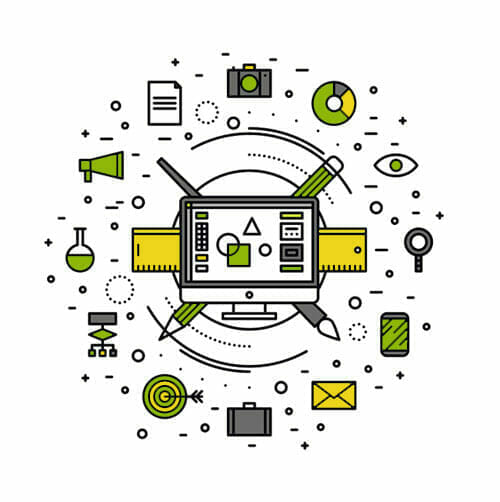What Is Resource Management?
So what is resource management? Resource management is the process of pre-planning, scheduling, and allocating your resources to maximize efficiency. Resource Management Software allows businesses to manage all aspects of their business from IT, Engineering, HR, and also resource portfolio management.
One of the perks that come with being a business owner is having full control over your company. This also comes with responsibility, such as resource management. Depending on what type of project you are working on – for example- an event organizer might need to manage many resources, such as scheduling out staff for the event and planning where they will get promotional materials from, amongst other things.
There are several steps in managing these assets which include determining their cost; identifying potential risks associated with specific types or uses; making sure all stakeholders have input into them when necessary (such as employees); establishing how much funding will be required at any given time while considering whether it can be used more than once if possible; ensuring appropriate risk mitigation procedures remain in place throughout life cycle so
Why is effective resource management important?
Resource management is all about doing more with less. The most important goal of resource managers is to make the best use out of every material they have available, especially when it comes down to planning how much and what resources are needed for a project. If you know your goals in advance then using these techniques will help ensure success so that not one scrap goes unused!
Resource management is a growing field, from those companies that hire someone to just focus on it all the way down to individuals. What does resource management entail? Resource managers are responsible for ensuring tasks get completed and resources allocated efficiently; this can be accomplished with resource management tools like project planner software which helps manage your projects more effectively than spreadsheets or other forms of manual workflows.
What are the advantages to resource management?
- Avoids unforeseen hiccups: Planning ahead can be the difference between a smoothly executed day and one that causes you to hit pause. By understanding your resources upfront and planning how to use them, you’ll know what’s coming down the pipeline so you won’t have any of those pesky unforeseen hiccups.
- Prevents burnout: Ensuring effective resource management allows you to avoid the fatigue and stress of working too many hours by gaining insight into your team’s workload.
- Provides a safety net: Sometimes, things just don’t work out. That’s why you put a great deal of effort into planning and managing the resources at your disposal to make sure that when these situations arise (which they inevitably do), you can always know that you did everything you could with what you had.
- Builds transparency: Putting our daily tasks in front of everyone is not just about showing that we’re working hard – it helps others envision how much capacity each person has so they know who else would benefit from some extra support during this busy period (or wouldn’t mind taking over responsibility down the line).
- Measures efficiency: If you have that high-level understandings on what’s needed to manage and execute an upcoming project, then you should be able to plan accordingly for ROI (return on investment) and utilization vs efficiency.
Types of Resource Management
IT Resource Management
Engineering Resource Management
Ever witnessed a project succeed without meticulous resource planning? On the off-chance your answer was yes, know that it probably won’t happen again. Resource management is at the core of successful projects and organizational efficiency. It ensures that there are enough people with related expertise on hand to complete jobs for various tasks, even if they have varying requirements or specifications. Multinational corporations and growing businesses invest significantly in streamlining their resource allocation process because it provides them an edge over competition who don’t use these policies themselves like prudent organizations do!
A study found that enterprise resource planning is an investment priority for 53% of decision-makers. With a resource management tool, they can smoothly manage their resources and make effective decisions more quickly than ever before.
Planning is an important aspect of engineering. Engineers need to know what they’re going to be working with and when, as well as how much it will cost them for the project. All this information needs to be gathered before any work can begin so that there’s no surprises along the way and hindering progress on a job-site.
Engineers are required by law in most states (and even across national borders) to create plans outlining all stages of their projects from conception through completion – these detailed blueprints allow engineers heads up about everything they’ll need at each stage leading up until construction begins; like equipment, materials costs including labor needed during production phases or installation times if applicable. These types of resources also provide guidance informing estimates made ahead which
Thus, engineering resource planning with Engeering Project Management Software is an integral part of successful project delivery on time and on budget.
This article emphasizes the importance of resource planning in engineering projects and some tips on getting the process right.
The required resources in engineering projects
Unlike other industries, projects that fall under the engineering domain require diverse skill sets and resources. Let us understand these requirements in detail:
1. Human resources
Engineering projects require a wide array of personnel to work on different types of tasks, and companies need the best people for their team. In order to maximize success, engineering firms should be seeking out talent with key competencies that would make them great additions as they are transforming in an ever-changing business climate.
-
- Mechanical engineers-
Projects encapsulating machine expertise or manufactured technologies need mechanical engineers.
- Mechanical engineers-
-
- Automobile engineers
As the name suggests, automobile engineers work in the automobile industry and work on vehicle designing and production.
- Automobile engineers
-
- Electrical engineers
Any project that has specific tasks pertaining to power system engineering, instrumentation, signal processing, etc., has a demand for electrical engineers.
- Electrical engineers
-
- Software engineers
Software engineers are needed for tasks like web designing, software and app development, and so on.
- Software engineers
-
- Analysts
With the advent of AI and Machine learning, the demand for analysts has escalated. Any engineering industry that requires interpretation of data to make strategic decisions needs an analyst.
- Analysts
-
- Construction workers, nothing gets done without hands and feet to accomplish the heavy lifting. Every project needs someone to put the figurative and literal hammer to the nail.
2. Equipment
The engineering behind a successful product is complex and requires some expensive tools. For example, heavy machinery is needed for the automobile manufacturing unit. These tools are pricey so it’s common to rent them from other companies or integrate these costs under project estimates in advance of starting work on your new invention idea with an Adaptive PPM Solution that helps managers plan projects better by determining equipment required well ahead of time.
3. Materials
Materials are the building blocks of the final product and part of the finished goods. For example, construction materials like brick, cement, etc., are the necessary components to form the entire tower, just like a database is required to develop a web application. The onus is on managers to enlist every constituent required and accumulate the needs matierals before the project’s onset.
4. Miscellaneous
Other than the above-mentioned primary resources, engineering projects can also require additional resources like:
- Organizational resources in terms of financials
- Contractors and vendors to procure the unavailable demand from external sources
- Extrinsic software for the overall management of projects
- Facilities like office space or warehouse, etc., to carry out the project tasks.
HR Resource Management
What is Human Resource Management?
Let’s start with a brief definition. Human Resource Management, or HRM, is the practice of managing people to achieve better performance.
For example, if you hire people into a business, you are looking for people who fit the company culture as they will be happier, stay longer, and be more productive than people who won’t fit into the company culture.
Another example is engagement. Engaged employees are more productive, deliver higher quality work and make customers happier. This means that if we can find ways to make employees more engaged, we help the company.
The HR department provides the knowledge, tools, training, legal advice, administration, and talent management, which is crucial to sustaining and advancing a company.
This is what Human Resource Management boils down to optimizing company performance through better management of human resources. This process can be help using the best software, Tempus Resource, HR Resource Management Solution.
. The next question is, who are these Human Resources?
What is a Human Resource?
It may feel a bit weird to refer to people as ‘human resources’. Human Resources are all the people that in one capacity or another work for or contribute to an organization.
These people make up a company’s workforce. They can be regular employees, for example, but also contractors. Especially with the rise of the gig economy, more and more people are starting to work for an organization on a contract basis without having a traditional labor contract.
These people include independent contractors, workers provided by contract firms, on-call workers, and temporary help agency workers.
An independent contractor can be under contract for years at the same organization, while an agency worker can work at 20 different companies throughout one year. Because these people are all involved in the company to a different extent, the way they are managed and involved in the organization should also be different.
Also, there are increasingly non-humans at work at the company.
In this case, we’re talking about the increase in robotization. Robots are increasingly involved in day-to-day work and the interaction between man and machine is becoming increasingly essential to the success of the organization. Although these machines are not considered ‘human resources’, there is a case to be made that they should be included in some way as they are part of the workforce.
The seven HR basics
When we talk about Human Resource Management, several elements are considered cornerstones for effective HRM policies. These cornerstones are:
- Recruitment & selection
- Performance management
- Learning & development
- Succession planning
- Compensation and benefits
- Human Resources Information Systems
- HR data and analytics
ProSymmetry was founded by Passionate Resource Management Experts…
…who knew that Efficiently Organizing, Distributing, and Allocating your Resources is the real key to organizational success.
Since 2007, we have been solving the resource management challenges that slow down, damage, and overwhelm organizations.
It’s clear that traditional, and even agile project management software, cannot cope with the demands of resource management. Organizations struggle to get project management data in, create scenarios and real options, and achieve strategic flexibility. To learn more, go to https://www.prosymmetry.com/ Tempus Resource by ProSymmetry.
Featured client/products:
Glass Floors | Semi Truck Ramp | Glass Blocks| SEO Services Near Me | Steel Yard Ramp | Ramp for Loading Dock | Glass Flooring | Loading Dock Ramps | Portable Yard Ramp | SEO Company Near Me | SEO Agency Akron | SEO Expert Near Me | Marketing Agencies Near Me | Marketing Agency Akron
Yard Ramps | Yard Ramp





